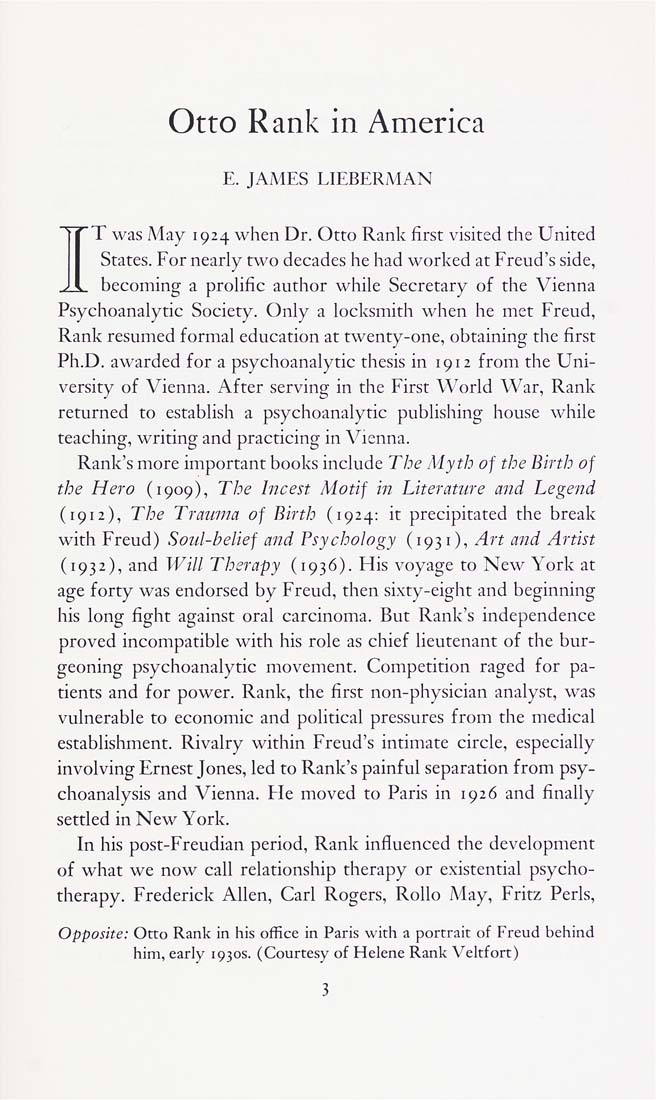Columbia Library columns (v.33(1983Nov-1984May))
(New York : Friends of the Columbia Libraries. )
|
||
|
|
|
|
| v.33,no.3(1984:May): Page 3 |

Otto Rank in America E. JAMES LIEBERMAN IT was May 1924 when Dr. Otto Rank first visited the United States. For nearly two decades he had worked at Freud's side, becoming a prolific author while Secretary of the Vienna Psychoanalytic Society. Only a locksmith when he met Freud, Rank resumed formal education at twenty-one, obtaining the first Ph.D. awarded for a psychoanalytic thesis in 1912 from the Uni¬ versity of Vienna. After serving in the First World War, Rank returned to establish a psychoanalytic publishing house while teaching, writing and practicing in Vienna. Rank's more important books include The Myth of the Birth of the Hero (1909), The hicest Motif i7i Literature a7id Legend (1912), The Traurna of Birth (1924: it precipitated the break with Freud) Soul-belief and Psychology (1931), Art a7id Artist (1932), and Will Therapy (1936). His voyage to New York at age forty was endorsed by Freud, then sixty-eight and beginning his long fight against oral carcinoma. But Rank's independence proved incompatible with his role as chief lieutenant of the bur¬ geoning psychoanalytic movement. Competition raged for pa¬ tients and for power. Rank, the first non-physician analyst, was vulnerable to economic and political pressures from the medical establishment. Rivalry within Freud's intimate circle, especially involving Ernest Jones, led to Rank's painful separation from psy¬ choanalysis and Vienna. He moved to Paris in 1926 and finally settled in New York. In his post-Freudian period. Rank influenced the development of what we now call relationship therapy or existential psycho¬ therapy. Frederick Allen, Carl Rogers, Rollo May, Fritz Perls, Opposite: Otto Rank in his office in Paris with a portrait of Freud behind him, early 1930s. (Courtesy of Helene Rank Veltfort) |
| v.33,no.3(1984:May): Page 3 |







